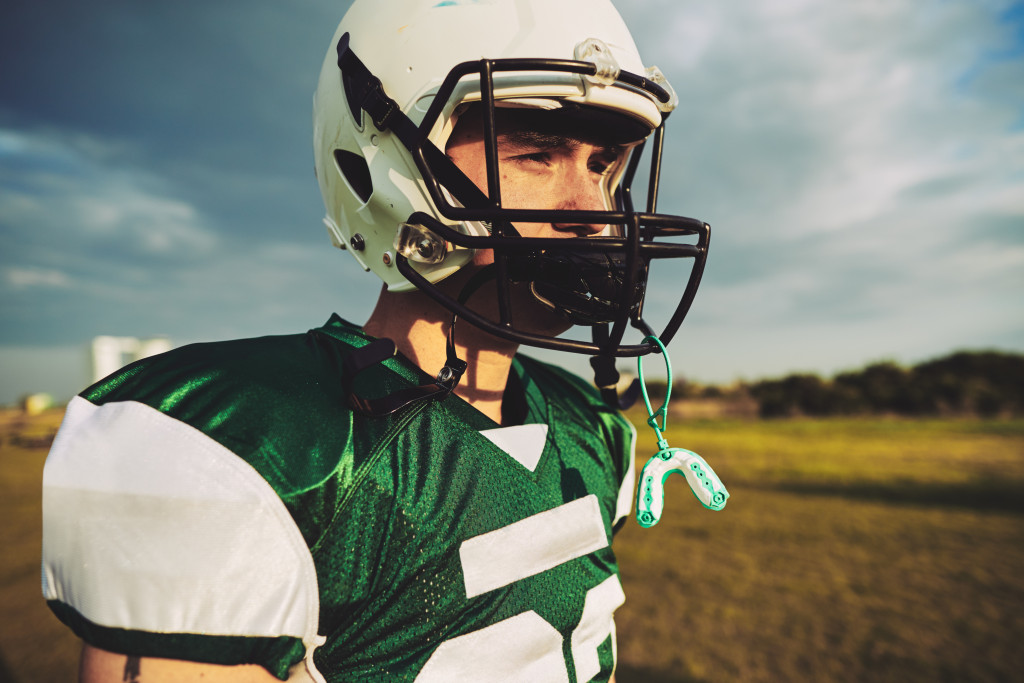Athletes are no strangers to injuries. With the physicality of sports like football and hockey, getting hurt has become a part of the job. You’d expect boxing and MMA to have their fair share of injured athletes. But even golf, as calm as it seems, has alarming statistics. A study conducted by GolfSupport states that nine out of ten professionals get a golf-related injury at least once in their lives.
With this in mind, it’s time the world takes a step back in discussing the technological improvement in the performance of the athletes and the overall entertainment value of sports and focuses more on how science has helped design sports gear to keep athletes safer.
Mouthguards

In 2018, a team of engineers and neurosurgeons worked together to find a way to solve TBIs or traumatic brain injuries caused by physicality in sports. After nearly a decade of meticulous research and testing, they created the Prevent Impact Monitor Mouthguard. This mouthguard was designed to measure the force, angle of the impact, the distance the force came from, and the distance the mouthguard accumulated due to the force. With these metrics, a real-time detection for possible concussions is done. A signal will then be sent through a mobile app, making the medical response faster.
It may not entirely prevent injury and concussion. Still, its invention has paved the way to advance early detection and fast medical solutions when it comes to contact sports injuries.
Helmets
The startup company VICIS has steadily grown in popularity over the last four years. By topping the annual safety ratings reported by the NFL and the NFL Players Association multiple times, the company started focusing on designing helmets that help keep kids safer whenever they play football.
The Zero Youth series of designs were engineered to have reinforced inner shells lined with thin columns that keep the head comfortable while providing extra support from solid impacts. But the most important feature is the deformable outer shell that absorbs the force of impact on the outside while keeping the head of the wearer safe, much like how a car bumper functions to keep one safe during collisions.
The helmet design has been tested by the Virginia Tech Youth Helmet Rating System, and it passed once again, with the highest safety rating in its time.
Pants
A pair of pants may not be that crucial in keeping an athlete safe in most sports, but when it comes to skiing, ski pants can draw the line between a career-ending injury and a trophy.
Bogner ski pants have been engineered to have over 100g of Freudenberg thermal insulation, keeping the lower body warm and nimble even in the coldest weather. It also boasts a 10k rated waterproof and water-repellent fabric that not only blocks out the cold but also keeps the fabric from getting slippery which is vital in ensuring a skier’s safety during big slopes. And most importantly, unlike the standard ski gear, Bogner ski pants are made of 4-way techno stretch fabric that improves mobility and flexibility during long slides, making it easier to balance and adjust to changes in terrain.
Lastly, with these pants’ adjustable scuff guards and snow gaiters, no snowflake is expected to get inside the clothing and cause discomfort or accidents.
Shoes
Almost every sport requires a pair of shoes. And the importance of shoes in improving an athlete’s performance and keeping an athlete safe has been the focus of many studies over the decade. But within the past decade, the science of footwear has been elevated by the invention of smart shoes.
The use of thin and bendable printed electronics that accurately measure and analyze data keep the wearers safe at all times. The data being analyzed include the weight, force of impact, temperature, posture, steps taken, and calories burnt. Under Armour’s Speedform Gemini 3 even analyzes the fatigue a wearer has accumulated by comparing the force and speed of the first steps and the decrease in force and speed on the latter parts of the run.
This is used for rehabilitation, most commonly by injured NBA players. However, it is also used in biomechanics, training, conditioning, and injury prevention since the data provided by this wearable technology can help analyze the best ways to keep an athlete healthy.
The Bottom Line
These advancements in technology have helped thousands of athletes stay healthy and recover from possible career-ending injuries. But most importantly, they serve as stepping stones for further progress in enhancing athletic performance and keeping the athletes safe.

















